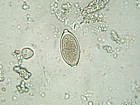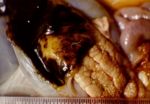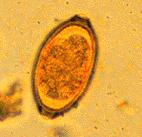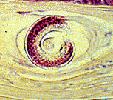Difference between revisions of "Category:Trichinelloidea"
Jump to navigation
Jump to search
(Created page with '{{unfinished}} [[Image:Trichuris ovis sheep.jpg|thumb|right|150px|''Trichuris ovis'' from sheep faeces - Joaquim Castellà Veterinary Parasitology Universitat Autònoma de Barc…') |
|||
| Line 18: | Line 18: | ||
| − | + | ||
| − | + | ||
| − | |||
| − | |||
| − | |||
== ''Trichinella'' == | == ''Trichinella'' == | ||
| Line 29: | Line 26: | ||
*It is covered in greater detail | *It is covered in greater detail | ||
| − | |||
| − | |||
| − | |||
| − | |||
| − | |||
| − | |||
*''Trichinella'' in [[Muscles Inflammatory - Pathology#Nematodes|myositis]] | *''Trichinella'' in [[Muscles Inflammatory - Pathology#Nematodes|myositis]] | ||
[[Category:Non-Bursate_Nematodes]] | [[Category:Non-Bursate_Nematodes]] | ||
Revision as of 11:10, 26 April 2010
| This article is still under construction. |
The common feature of members of this group is that the oesophagus is a column of doughnut-shaped cells. They are only distantly related to the other nematode groups and so drugs developed primarily for controlling strongyle and ascarid worms are often less effective against these.
There are just three genera of veterinary importance:
- Trichuris (the whipworms)
- Capillaria
- Trichinella
Trichinella
- This is known as the "worm that thinks its a virus"
- It is an important zoonosis
- It is covered in greater detail
- Trichinella in myositis
Pages in category "Trichinelloidea"
The following 5 pages are in this category, out of 5 total.





